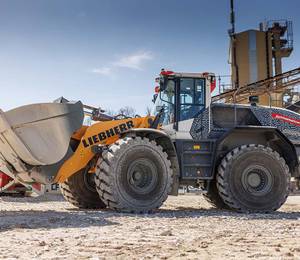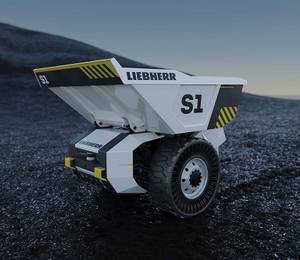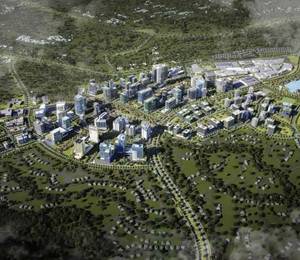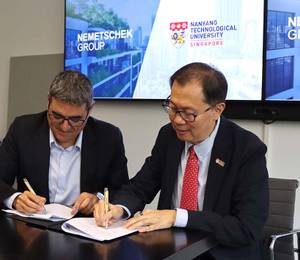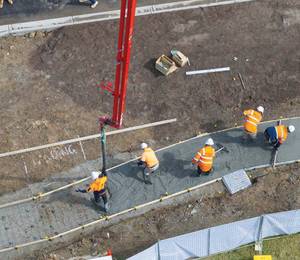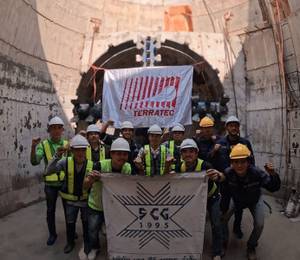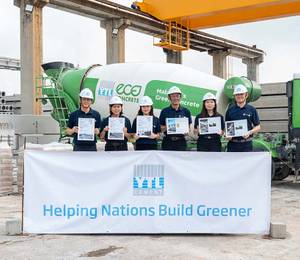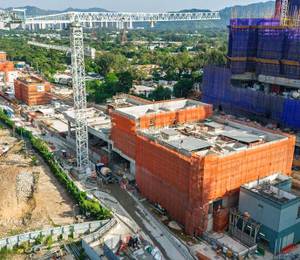At the Liebherr international construction trade press tour 2024, held recently in late October, the group provided an overview of its digitalisation strategy and discussed how artificial intelligence (AI) plays a significant role in its operation.
The group’s digital transformation is being coordinated by the Liebherr Digital Development Centre (LDC). This internal competence centre develops digital solutions and implements them across product segments and divisions, covering a wide spectrum of applications, from analysis to automation and even operation and maintenance.
“The ongoing transition to digital technologies allows us to make existing products and services more efficient and to gradually open up new business models,” said Heinz Klemm, managing director of Liebherr Digital Development Centre.
For Liebherr, its digital solutions are always intended to create added value for customers. “The fast and flexible exchange of information will play a major role on the construction sites of the future,” noted Mr Klemm. “That’s why we are working on digital solutions for an efficient interaction from machine to machine (M2M) and between human and machine (HMI).”
One result of this work is the group’s cloud-based fleet management system, which allows customers to monitor their machines in real time, schedule maintenance cycles and analyse utilisation data. This, in turn, improves how resources are used and reduces downtimes. Another example is predictive maintenance, a method whereby machines can collect and report data about their performance and condition independently in order to identify problems at an early stage before failures occur.
The importance of AI
AI plays an important role at Liebherr within the context of digitalisation. The group pointed out that the full benefits of the Internet of Things (IoT) can only be exploited using AI. Take construction site monitoring as an example: machines fitted with IoT sensors provide real-time data on their location, their operating condition and potential faults. This data is then analysed by AI systems that automatically emit warnings or make adjustments to minimise risks. In comparison with previous manual monitoring, this approach is much more precise and much faster, which then dramatically improves efficiency and safety on construction sites.
Liebherr also adopts AI technology internally, including in production and R&D department. So, assisted by robotics and AI control units, production processes become automated and quality checks become more precise. Automated systems monitor manufacturing processes in real time, detect any deviations and report potential problems immediately, before they can lead to production downtimes. In the R&D department, AI assists with the development of simulation and test scenarios, among other things.
Mr Klemm stressed that Liebherr recognises the fundamental importance of AI in maintaining its competitive edge, driving innovation and creating value for both external and internal stakeholders. The group aims to accelerate the adoption of AI across the organisation while aligning with business and IT strategies, ensuring robust governance, and managing key risks such as privacy and security.
UX-oriented applications
Amidst all the variety and technological sophistication of digital applications, Liebherr has one clear focus: the convenience of operation for users, or user experience (UX) as it is also known. UX-oriented applications, like smartphone apps for machine control, interactive dashboards for data analysis, intuitive user interfaces and the ability to adapt digital applications to individual user requirements, enable customers to interact more efficiently with the systems and to reach decisions faster.
Liebherr Connect, for instance, delivers maximum user convenience. This latest connectivity solution makes it possible for various machines to be networked with each other. It allows access to digital solutions and services, as well as extensive machine and process data. When using fleet and asset management systems, Liebherr Connect forms an essential basis for any type of component or machine condition monitoring. It is an important prerequisite for the use of assistance systems and constitutes the key to both digitalisation and machine autonomy.
According to Liebherr, this connectivity solution has been integrated in many of its machines but can also be retrofitted in earlier generations of machine already on the market. The system enables the secure networking of the machine via cloud applications into the digital world – and across nearly all the group’s product segments. In some cases, it has already been a well-established solution for several years: earthmoving machines, deep foundation machines, material handling technology, mining, tower cranes, mobile and crawler cranes, maritime cranes and components.
Modular cloud architecture
All Liebherr’s digital applications are available through a cloud-based system. The cloud architecture has a modular setup and offers a flexible infrastructure for seamlessly integrating different technologies and applications. “Our multi-cloud strategy enables us to take advantage of different providers’ strengths and avoid becoming reliant on one single service provider,” said Mr Klemm.
The modular architecture also means digital applications can be adapted to the customer’s individual needs with precision. Internally, a central cloud infrastructure allows teams and departments around the world to be closely networked. This not only promotes the exchange of knowledge, but also helps teams to respond faster to customer requests and new market demands.
The next step for Liebherr is to integrate AI and IoT more heavily into machines and work processes. “Our goal for the near future is to develop systems that are even more autonomous, that optimise work processes in real time through self-taught algorithms, giving customers a high degree of efficiency,” revealed Mr Klemm.
“We will also forge ahead with the expansion of the cloud infrastructure to process the growing volumes of data efficiently and to facilitate new data-powered business models.” To this end, Liebherr is relying on close collaboration with customers and partners to develop custom-fit, future-focused solutions.

